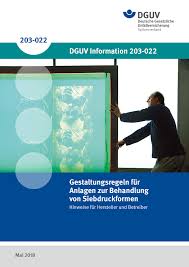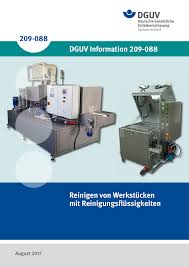Wissenswertes
New regulations in explosion protection:
When the new Industrial Safety Ordinance comes into force on June 1, 2015, almost all explosion protection requirements will be transferred to the Hazardous Substances Ordinance.
Only the test regulations for Ex systems remain in the BetrSichV.
The question of when an explosion protection document is required has led to many controversial discussions in the past.
In future, explosion hazards may be dealt with in the general risk assessment - if a definition of potentially explosive areas including zoning is not necessary or useful.
We refer those interested to the DGUV Information 203-022 "Design rules for systems for the treatment of screen printing forms" and the DGUV Information 209-088 "cleaning workpieces with cleaning fluids" of the German statutory accident insurance , in whose development the "Blechstüble" was also involved.
Example calculation: single-chamber cleaning systems compared with cleaning systems with separate washing and drying chambers:
08/15 single-chamber cleaning system:
Washing time: 5min - compressed air consumption 300l / min x 5min = 1.5m³
Drying time: 15min 1400l / min x 15min = 21m³
Total: 22.5m³
Electricity costs: € 0.015 / m³ compressed air
22.5m³ x 0.015 € = 0.34 € / template
Cleaning medium costs approx. € 8 / liter
Loss of cleaning medium / stencil: approx 250ml = € 2
Total cost per stencil: € 2.34
Two-chamber cleaning system: (e.g. continuous stencil cleaning system WASCHBÄR)
Washing time: 5min - compressed air consumption 300l / min x 5min = 1.5m³
Drying time: 7.5min. Power consumption 0.033kW / min x 7.5min = 0.25 kW
Total electricity costs: 1.5m³ x € 0.015 = € 0.023
0.25kW x 0.098 € / kwH = 0.025 €
€ 0.048 / template
Loss of cleaning medium / stencil: approx 50ml = € 0.40
Total costs per stencil: € 0.45
Another advantage: twice as fast because cleaning and drying are possible at the same time
We are happy to provide proof of the correctness of our information with our power meter HM8115-2.
Due to multiple inquiries, a brief comparison of open (manual) washing systems and closed (automatic) chamber systems:
Disadvantages of an open car wash
- high health burden
- open handling of solvents
- Interruption of production time
- high consumption of solvent (up to 1/3 more)
- high consumption of cleaning cloths (approx. 2 € / sieve)
Example calculation: Assumption of 10 sieves per day
Manual washing system:
Working time for manual sieve cleaning approx. 15 minutes / sieve = 2.5 h / day
2.5 h x 250 working days / year = 625 h
625 h x 28.80 € wage / ancillary wage costs = 18,000 € / year
Cleaning cloths: 2500 pcs / year x € 2 = € 5000 / year
Total: € 23,000 per year
Chamber system:
Loading approx. 3min / sieve
2500 sieves / year x3min = 125 h
125 h x 28.80 € = 3600.- € / year
Saving: 19,400 € / year



